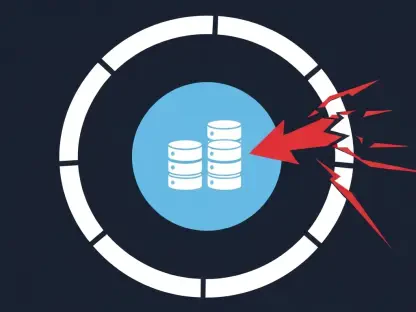The recent supply chain hack targeting GitHub Actions has exposed significant security gaps within frequently used actions, requiring an urgent evaluation of best practices to counter such threats effectively. The attack came to light when ‘tj-actions/changed-files,’ an action used extensively by over 23,000 repositories to monitor file and directory changes, was discovered to have been maliciously altered. This malicious alteration allowed the script to dump CI/CD secrets into build logs. This revelation has sent shockwaves throughout the cybersecurity community, as these secrets could potentially be exploited for further attacks, though no evidence has yet surfaced indicating any exfiltration of the collected data.
Analysis of the Incident
Identifying the Root Cause
Several cybersecurity firms have dedicated significant resources to disentangling the complexities of this breach. Notably, Wiz, now integrated with Google, has pinpointed the origin of the compromise. The ‘tj-actions/change-files’ relies on ‘tj-actions/eslint-changed-files,’ which further depends on ‘reviewdog/action-setup.’ The chain of dependencies revealed a critical weakness through which the attacker infiltrated the system by obtaining a GitHub personal access token (PAT).
Wiz’s analysis highlights that the vulnerability stemmed from the automatic invitation and write access provided to contributors, which might have been harnessed by the attacker. Alternatively, an existing contributor’s account could have been compromised to execute this breach. This sequence of events underscores the intricacies and domino effect within dependency chains in software development workflows, which can be exploited if even a single node is compromised.
The extent of the breach became clearer when security firm Reviewdog diligently traced the changes and took corrective actions to fortify the vulnerabilities. Their findings revealed that the exposure wasn’t limited to a single action but affected multiple components within the dependency framework. By implementing stricter access controls and monitoring mechanisms, Reviewdog aimed to prevent such unauthorized manipulations in the future, showcasing the criticality of immediate and adaptive security responses.
The Domino Effect on Dependencies
A detailed examination by Palo Alto Networks further illuminated the magnitude of the attack, initially targeting Coinbase. The attackers explored vulnerabilities within Coinbase’s public CI/CD workflow for an open-source project but were fortunately unable to exploit Coinbase’s secrets or publish compromised packages. This failure to leverage Coinbase’s vulnerabilities prompted the attacker to widen the scope of the attack, utilizing the ‘reviewdog/action-setup’ as the pivot.
The knock-on effects from this critical node were substantial, cascading through a significant portion of the ecosystem. Palo Alto highlighted that as many as 160,000 dependencies in the third level of the dependency tree could potentially be impacted. This broad scope underscores the interconnectedness within modern software development pipelines and the resultant increased risks of widespread cyber threats. The analysis emphasizes the importance of stringent security audits across all levels of dependencies to mitigate such expansive risks.
Consequences and Mitigation
Assessing the Magnitude of the Breach
Endor Labs undertook a comprehensive assessment to understand the actual damage inflicted by the hack. Their analysis focused on evaluating the extent of secret leaks and the sensitivity of the affected data. They reported that, out of the 23,000 repositories reliant on ‘tj-actions/changed-files,’ only 218 repositories exhibited leaks. Notably, most of these leaks involved ephemeral tokens, which would expire after the execution of workflow runs, thereby mitigating the immediate risk.
Despite the limited number of leaked secrets, the incident serves as a critical reminder of the potential threats posed by inadequate security measures. The immediate mitigation efforts included revoking compromised tokens and enhancing the security protocols around accessing and managing these tokens. This proactive approach aims to ensure that even if similar vulnerabilities are exploited in the future, the resultant damage would be minimal.
Long-Term Implications and Recommendations
Following the incident, the vulnerabilities were designated CVE-2025-30154 and CVE-2025-30066 for the Reviewdog and Tj-actions actions, respectively. The designation of CVEs underscores the need for broad-based vigilance and provides a framework for organizations to understand the threat landscape better. Organizations are advised to closely review GitHub’s security recommendations linked to third-party actions to preemptively address potential security gaps.
Additionally, the breach has instigated a renewed focus on the importance of rigorous security audits and dependency reviews. Incorporating automated vulnerability scanning and regular manual code reviews can help identify and remediate potential weaknesses before they can be exploited. Enhanced contributor vetting processes and limiting automatic write access are critical steps in safeguarding against unauthorized access and ensuring stricter operational security.
Ensuring Robust Security in Future
The recent supply chain hack targeting GitHub Actions has revealed major security vulnerabilities within commonly used actions, calling for an immediate review of best practices to effectively counteract such threats. The incident was uncovered when ‘tj-actions/changed-files,’ an action widely used by over 23,000 repositories for detecting file and directory changes, was found to have been maliciously compromised. This malicious modification enabled the script to dump CI/CD secrets into build logs. This discovery has sent waves through the cybersecurity community, as these secrets could be leveraged for future attacks. While there is no conclusive evidence yet that indicates any of the collected data has been exfiltrated or misused, the potential for exploitation exists, highlighting the need for stronger security measures. This event underscores the critical importance of vigilance and robust security protocols within software development practices to safeguard against such sophisticated cyber threats.









